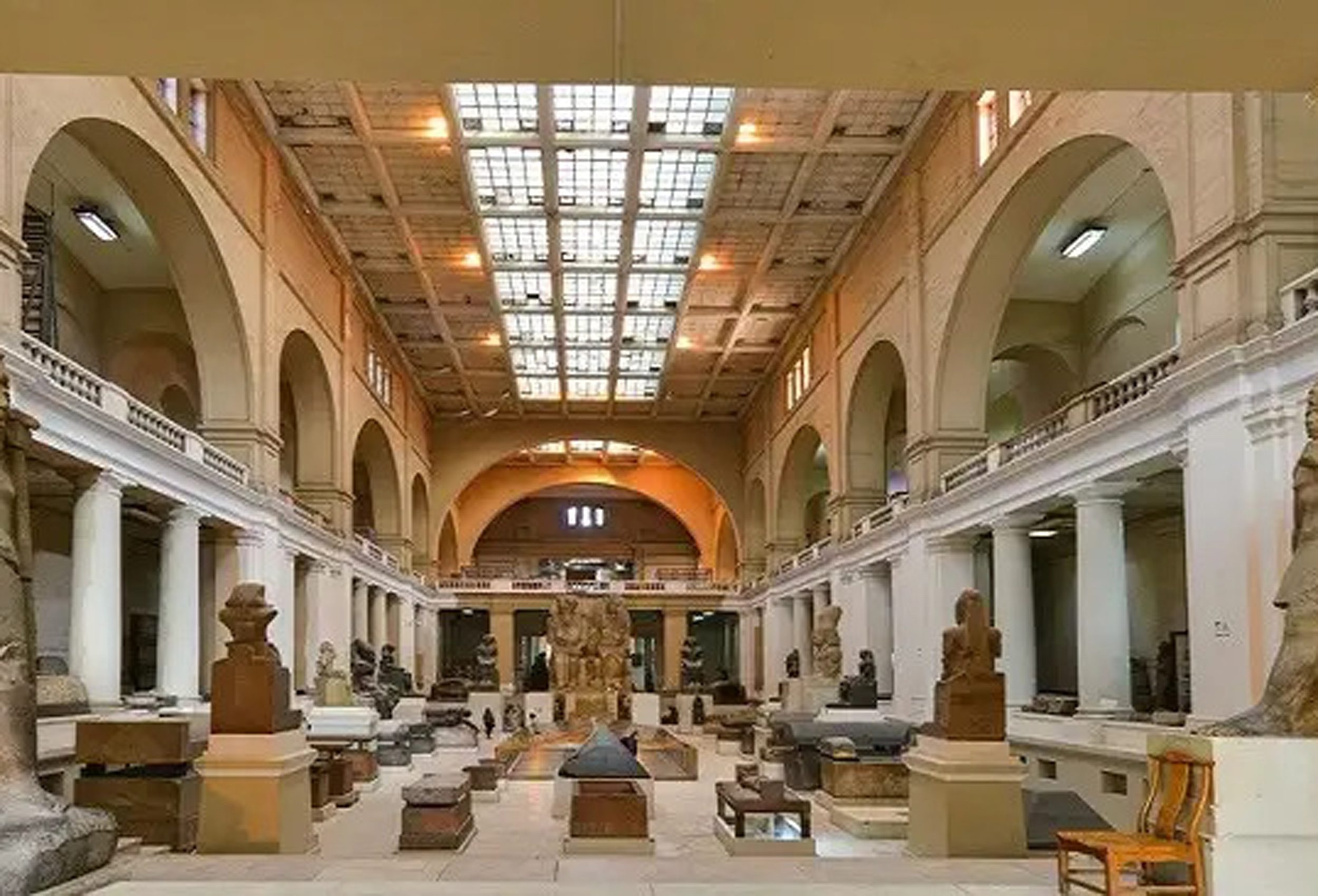The Cairo Museum, officially known as the Egyptian Museum, stands as a testament to Egypt’s grandeur and historical significance. Established in 1902, it is one of the oldest and most renowned museums in the Middle East. This institution houses an unparalleled collection of ancient Egyptian artefacts, with over 120,000 items on display, spanning more than 5,000 years of Egypt’s illustrious history.
The Treasures of Tutankhamun
One of the museum’s most captivating exhibits is the collection of treasures from the tomb of Tutankhamun. Discovered in 1922 by archaeologist Howard Carter, the tomb’s artefacts have fascinated the world for nearly a century. The centrepiece of this collection is the iconic golden mask of Tutankhamun, a masterpiece of ancient craftsmanship. The mask, made of gold inlaid with lapis lazuli, carnelian, quartz, obsidian, turquoise, and coloured glass, represents the epitome of ancient Egyptian artistry. The sarcophagus, which held the young pharaoh’s mummy, is equally impressive, showcasing intricate carvings and an extraordinary level of detail.
The Royal Mummies Hall
The Royal Mummies Hall offers a rare and eerie glimpse into the past. This exhibit features the mummies of several pharaohs, including Ramses II, Seti I, and Hatshepsut, among others. The preservation of these mummies provides invaluable insights into the death rituals and embalming techniques of ancient Egypt. Visitors can observe the mummification process’s success, as the remains maintain a remarkable degree of preservation. This hall serves as a powerful reminder of the ancient Egyptians’ beliefs about the afterlife and their meticulous preparations for it.
Ancient Egyptian Jewellery
The museum’s collection of ancient Egyptian jewellery is a testament to the society’s sophisticated craftsmanship and artistic prowess. These pieces, made from gold, silver, and semi-precious stones, reflect the wealth and status of their owners. The jewellery includes necklaces, bracelets, earrings, and rings, each designed with intricate patterns and symbols that held significant meaning. This collection not only showcases the beauty of ancient Egyptian art but also provides insight into the cultural and social aspects of the time.
The Statue of Khafre
Among the museum’s many sculptures, the statue of Khafre stands out for its representation of power and majesty. Sculpted from diorite, a hard and durable stone, the statue portrays Khafre, a ruler of the Old Kingdom’s Fourth Dynasty, seated on a throne. The craftsmanship is highly detailed, capturing the pharaoh’s stern expression and the symbolic elements of his reign, such as the falcon god Horus perched behind his head. This sculpture highlights the artistry and skill of ancient Egyptian sculptors and the significance placed on depicting their leaders with such grandeur.
Papyrus Scrolls and Hieroglyphic Writings
The museum’s collection of papyrus scrolls and hieroglyphic writings offers a window into the daily life, religion, and administrative practices of ancient Egypt. These documents encompass a range of subjects, from legal texts and medical treatises to religious hymns and literature. The precision and artistry involved in creating these scrolls are evident in the finely detailed hieroglyphs and illustrations. This collection is invaluable for understanding the complexities of ancient Egyptian society and the sophistication of their written language.
Historical Context and Evolution
The Cairo Museum was initially built to house antiquities from royal palaces and excavations by the French engineer Auguste Mariette. Over the years, the museum has undergone several expansions to accommodate its growing collection. It now consists of two main floors, each filled with artefacts that tell the story of Egypt’s rich history. The ground floor houses extensive collections of papyrus and coins used in ancient Egypt, while the upper floor is dedicated to the artefacts from the New Kingdom and the Greco-Roman period.
Conclusion
The Cairo Museum is a treasure trove of ancient Egyptian history and culture. Its vast collection of artefacts provides an unparalleled glimpse into one of the most fascinating civilizations in human history. For history enthusiasts, art lovers, and travel bloggers, a visit to the Cairo Museum is an enriching experience that offers a deeper understanding of ancient Egypt’s legacy.
If you’re planning a trip to Cairo or simply want to learn more about ancient Egyptian culture, the Cairo Museum should undoubtedly be at the top of your list.
